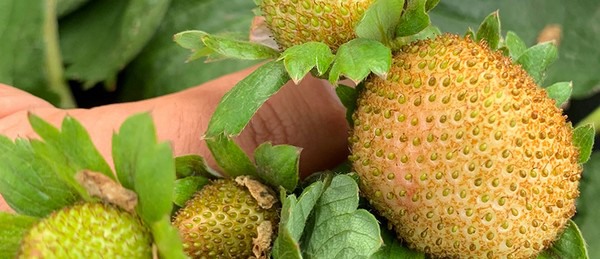Good news for farmers as we near the height of the strawberry growing season. University of Florida scientists have found a way to better control the chili thrips that can make strawberries virtually unmarketable – and it means using fewer pesticides. Florida growers produce about 11,000 acres of fruit each season. With the new, biological control method, farmers could save up to 5,000 gallons a year in pesticides that would otherwise be used on the crop, said Sriyanka Lahiri, a UF/IFAS assistant professor of entomology.
While pesticides kill thrips, they also can destroy predatory mites, pollinators and other beneficial insects, which can result in a pest resurgence and thus, less fruit yield. As a substitute for pesticides, Lahiri’s new research points toward using mites to control the thrips (a bug).

In recent years, chili thrips have caused significant economic damage to strawberries. It feeds on plant tissues and reduces fruit size, leaving farmers with far fewer strawberries to sell. But the news from Lahiri’s lab comes at an optimal time. Most strawberry growers have planted their fruit for this season. The strawberry season comes to a peak in January and ends in early March across a huge swath of western and central Florida – mostly in the Tampa Bay region.
In newly published research, UF/IFAS entomologists found that a biopesticide and the predatory mite Amblyseius swirskii can more effectively control chili thrips than using traditional pesticides. With the treatments, scientists saw little damage to the strawberries.
Specifically, Lahiri, a faculty member at the Gulf Coast Research and Education Center, put thrips on a UF/IFAS-bred ‘Florida Radiance’ strawberry plant. Then, she sprayed the biopesticide and added predatory mites, and saw less fruit damage because the biopesticide and mites eliminated most of the thrips. “This is especially relevant for organic strawberry production because there are very few effective tools to manage thrips that are also certified to be used in organic production,” said Lahiri. About one-third of the strawberries cultivated in Florida are organic.

 UF/IFAS
UF/IFAS